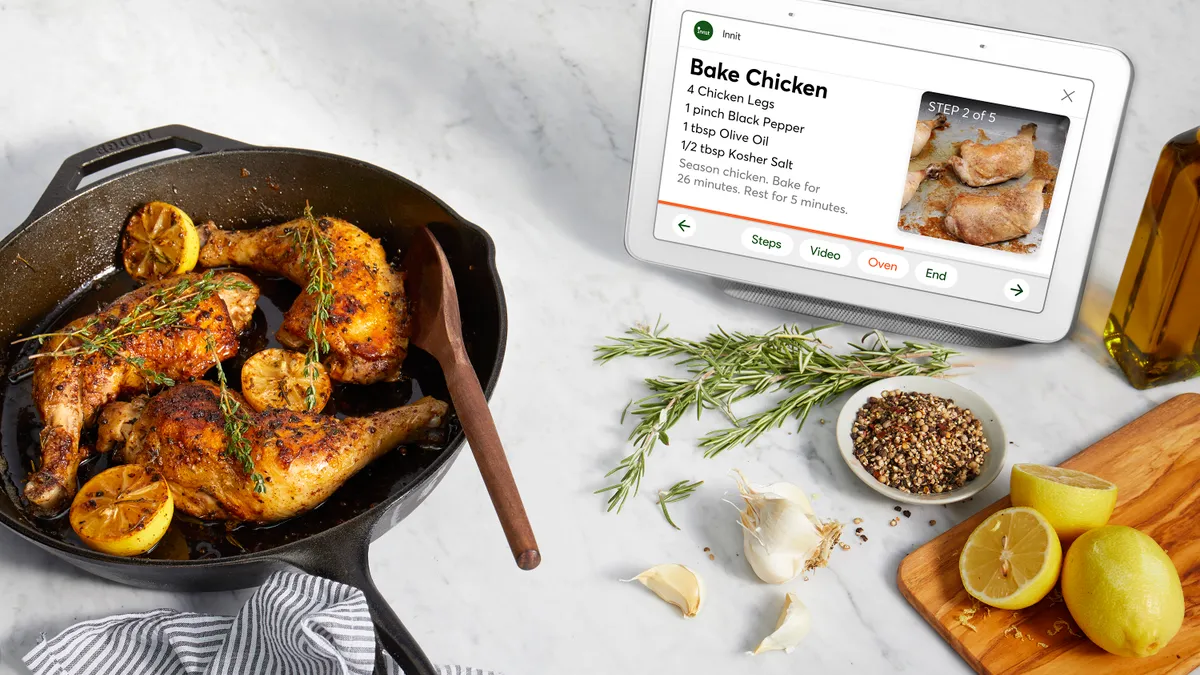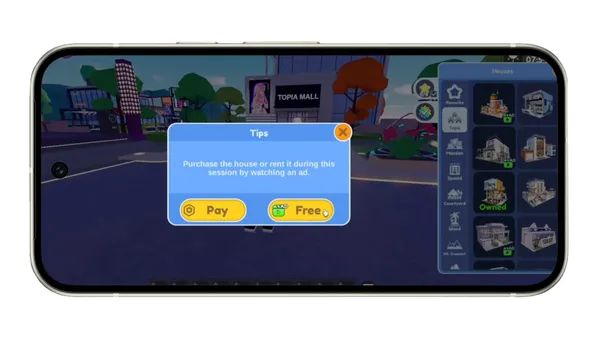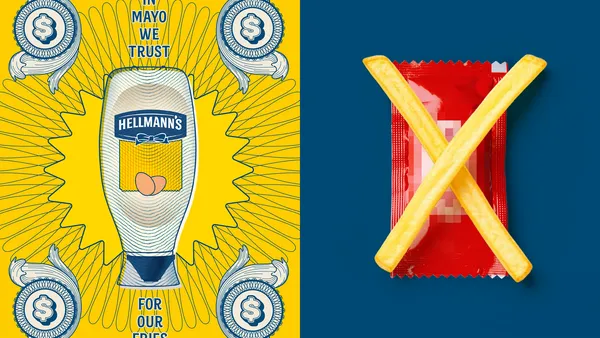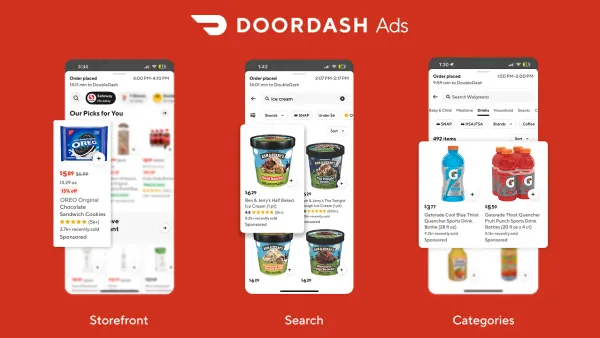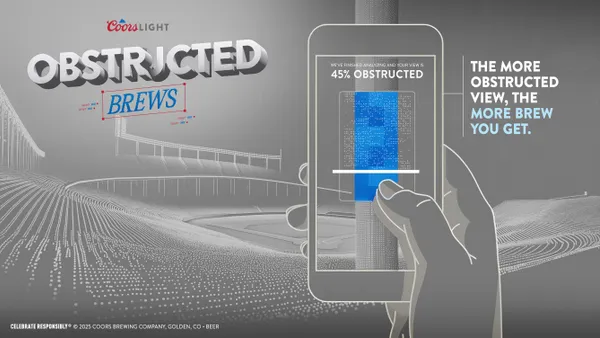Dive Brief:
- Connected kitchen app Innit has added shoppable recipes from 30 retailers to its automated, customizable meal preparation platform, according to a press release emailed to Grocery Dive. Participating retailers include Walmart, Kroger, Target, H-E-B, Safeway and Wegmans.
- Through the Innit app, users can find a recipe, customize it based on dietary preferences and automatically add ingredients to their online grocery cart for pickup or home delivery. Once shoppers get their ingredients, they can follow preparation instructions on the Innit app and, if they have it, connect directly with a smart home product or connected appliance, such as an oven enabled with Wi-Fi, to finish cooking.
- Innit has forged partnerships with appliance makers including General Electric, LG and Bosch and with food suppliers such as Tyson to create its end-to-end food preparation platform. The company has also integrated with Google's Home Hub and other Google Assistant-compatible smart displays.
Dive Insight:
According to Innit CEO Kevin Brown, various other facets of consumers' lives, from hailing a taxi to listening to music, have gone digital. But food prep has remained stubbornly analogue.
"Each one of these industries has organized around software platforms that make it easier or the consumer," Brown told Grocery Dive.
Through Innit's platform, consumers can go from discovering a new chicken recipe to setting their oven to just the right time and temperature before the food goes in. This "culinary GPS" system, as Brown calls it, is the latest evolution in the push to help home cooks assemble fresh, accessible meals.
Innit, like other connected kitchen companies, has inked deals with major food manufacturers and appliance makers in an effort to digitize and commercialize every link in the food preparation chain. This imagines a future where many people can scan a QR code on a product or tap their favorite brand name in an online recipe, then follow instructions and utilize their automated appliances all the way to the dinner table.
Of course, most consumers don't have the technological knowhow, much less the right hardware, to follow every step in the connected kitchen. It's very early to say whether or not people will find a culinary GPS easier than following disjointed recipe books, apps and appliances.
But many companies are betting on this, with even low-cost kitchen products now becoming Wi-Fi and Bluetooth-enabled as the "internet of things" movement marches forward. More and more devices, including Whirlpool microwaves, are now Alexa enabled, while smart refrigerators can tell when people are low on eggs or milk and help create shopping lists.
Up until now, grocers have stayed out of the smart kitchen. But as they continue to push into online ordering, apps and more, the opportunity for digital integrations with smart refrigerators and appliances, shoppable recipes and other innovations continues to grow. Meal kits developed as a way to help people connect the dots in the kitchen, but that industry is struggling with a difficult operational model. Could smart kitchen technology step in to fill that demand?
Linking with smart kitchens, whether through store promotions or integrations such as the Innit app, could help further tie grocers to culinary inspiration, which could resonate with shoppers. It could also help grocers stay relevant as Uber Eats and other restaurants and restaurant delivery apps continue to grab dining dollars.
"All of them realize that consumers are looking for more convenience," said Brown. "[Consumers] have already got this from food delivery and restaurants, and now we have to put the wrapper around it for buying groceries."



